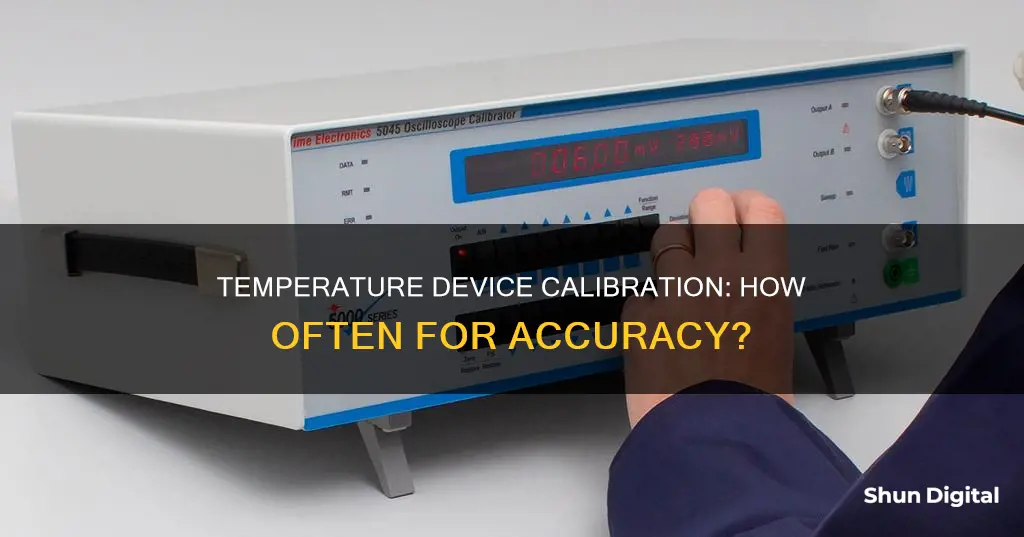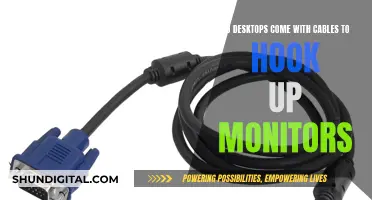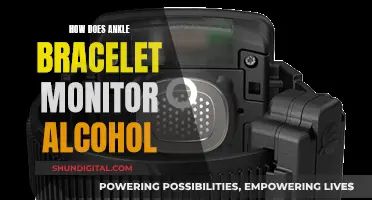
Calibration is a crucial process for temperature monitoring devices to ensure accuracy and reliability. It involves comparing the readings of a device under test with a reference device, making any necessary adjustments, and documenting the results. While the specific interval for calibration may vary depending on factors such as sensor type, accuracy requirements, and environmental conditions, regular calibration is generally recommended to maintain the performance and longevity of these devices.
| Characteristics | Values |
|---|---|
| Purpose of calibration | To ensure accuracy and reliability of measurements |
| Calibration process | Comparison of the device under test with a reference device |
| Calibration frequency | Every 1-2 years for temperature sensors; more frequently if exposed to extreme temperature variations or high humidity levels |
| Calibration standards | ISO 17025 is the international standard for calibrations |
| Regulatory requirements | Calibrated sensors are required by regulatory bodies such as FDA, EU, and WHO |
| In-process calibration | A faster, less reliable, and cheaper way to calibrate; used for thermometers and on-site calibration |
| Drift | Change in accuracy over time due to physical influences and ageing of components |
| Sensor types | Temperature sensors, humidity sensors, barometric pressure sensors, wind speed sensors, wind direction sensors, rain gauges |
| Calibration methods | Comparison to a known reference, such as a calibrated thermometer or relative humidity generator |
What You'll Learn

Regulatory requirements for calibration
Temperature calibration is a necessary regulatory step, especially in the pharmaceutical industry, where temperature regulation is critical for medications, vaccines, and other products. Calibration ensures that temperature sensors are accurate and reliable, which is essential for maintaining the quality and efficacy of temperature-sensitive goods.
In the European Union, the EN13486 standard mandates periodic verification of temperature sensors for the transport and storage of frozen food intended for human consumption. While calibration is not mandatory for other products, it is strongly recommended. The European Commission regulation N° 37/2005 states that users are responsible for conducting risk assessments to determine the frequency of verification, which must be carried out by a metrology laboratory with appropriate certification.
In the United States, the Food and Drug Administration (FDA) auditors often request calibration certificates and reference documents during inspections. Similar regulatory requirements exist in Switzerland, Germany, and the United Kingdom, where national accreditation bodies oversee sensor calibration and testing.
To comply with these regulations, temperature sensors should be calibrated regularly, typically annually. This involves comparing the sensor's readings with a reference device under controlled conditions. If adjustments are needed, they are made, and a calibration certificate is issued to document the results.
Some auditors may require an ISO 17025 calibration for cold chain shipments, which is a more stringent standard that provides additional assurance of accuracy. This standard requires accreditation from a recognised body and adheres to specific processes and tolerances.
Overall, regulatory requirements for temperature calibration aim to ensure the accuracy and reliability of temperature sensors, particularly in industries where temperature control is critical, such as pharmaceuticals and food storage and transportation. By adhering to these requirements, organisations can maintain the quality and safety of their products and avoid regulatory non-compliance.
Asus VS247H-P Monitor: Built-in Speakers or Not?
You may want to see also

Technical perspective of calibration
Calibration is a comparison test between a reference device and a device under test. The accuracy and uncertainty of the reference device are known and can be traced back to the national physical laboratory (NPL) through calibration. The device under test is checked multiple times for accuracy within a predefined tolerance during the calibration process.
The calibration standard operating procedures (SOP) can be accredited to ISO 17025 standards. Regular audits and intercompany tests are hosted to ensure reliability. Calibration involves the reliable, reproducible, and documented comparison of a sensor or data logger being tested with reference equipment. The referenced instrument is precise and undergoes regular checks in an accredited laboratory.
Sensor calibration takes place at defined measurement points. Firstly, a device or machine maintains stable conditions using a small bath or a dry block. Next, the hardware adjusts for a set interval, usually thirty minutes, to reach the same temperature. Technicians then compare the temperatures displayed by the devices being tested and the reference. If the readings do not match, the usual action is to adjust the device under examination to display correctly. Once within specification, a calibration certificate records the result.
The core of each data logger is its measurement sensor. Each sensor type has a specific measurement range and accuracy, and different strengths and weaknesses. Before the sensors are installed into a data logger, each sensing element is calibrated, i.e. tested for its accuracy, documented, and thus exactly within the defined specification. The change of accuracy over time is called "drift". After one year, the sensor will be recalibrated to verify if the sensor accuracy is still within specification.
In-process calibration is a quick and relatively inexpensive method, typically used on-site or in situ with thermometers. However, it tends not to be as precise as the complete procedure in stabilized conditions. Essentially, the in-process approach involves comparing the readings of devices under examination with reference devices. By definition, these comparisons take place only at the current process temperatures. Nonetheless, even though the theoretical risk of error is higher than with the fuller procedure, in-process results are usually accurate enough.
As components age, the risk of drift varies according to the sensor type, the measuring principle used, and the degree of physical protection. Nonetheless, suitable quality sensors tend to be stable for many years, whether used in fixed positions or portable applications.
In itself, calibration does not make sensors more accurate. Instead, accuracy is built into the design. So first, manufacturers pair robust calibrated sensors with a compatible algorithm. Next, technicians conduct sample tests to verify that the resulting measuring equipment is accurate and meets the specification(s).
From a technical point of view, repeat calibration of these sensors might appear unnecessary. The risk of drift is minimal, and they are usually stable for long periods. So why replace or recalibrate them every year? The answer lies in the fact that GxP guidance documents such as those of the FDA, EU, and WHO refer to calibrated sensors. While some publications make a general reference, others insist on regular calibration – typically annually.
Monitor Measurements: Understanding Screen Sizes for Optimal Viewing
You may want to see also

Calibration methods
Calibration Bath or Block (Dry Block):
This method involves using a calibration bath or a calibration block (dry block) to maintain a constant temperature. The device under test and the reference device are placed in the bath or block for a defined time (e.g. 30 minutes) to adjust to the temperature point. This approach is commonly used for temperature calibration and can be applied to data loggers, sensors, and thermometers.
Humidity Calibration:
For humidity calibration, a humidity generator or a reference solution (such as salt water) is used to generate a defined humidity level at a given temperature. The device under test and the reference device are exposed to these conditions for a set time (e.g. 2 hours) before their measurements are compared. This method is particularly relevant for calibrating devices used in pharmaceutical or high-precision applications.
In-Process Calibration:
In-process calibration is a faster, less expensive, and less reliable approach typically performed on-site without specialised equipment. It involves comparing the current readings of the device under test and the reference device at the current process temperature. While it carries a higher risk of measurement errors, it still provides a good indication of the accuracy of the tested device.
Simulation Calibrators:
Simulation calibrators emulate temperature values electronically without generating physical heat. They generate signals that mimic the output of a temperature sensor at various temperature points. These calibrators are programmable and allow users to set desired temperature values. Simulation calibrators are commonly used for temperature measurement devices such as thermocouples, RTDs, and temperature transmitters.
Heat-Producing Calibrators:
Heat-producing calibrators, on the other hand, generate physical heat using heating elements like resistive coils. They can heat up to specific temperature points and maintain them within a certain range. This type of calibrator is commonly used for temperature sensors, thermometers, and other devices that require direct exposure to heat.
Infrared Blackbody Calibrators:
Infrared Blackbody Calibrators are used for non-contact temperature measurement equipment, such as infrared thermometers, thermal cameras, and pyrometers. They utilise a surface with near-perfect emissivity that is heated to a known temperature and compared with the reading from the device under test.
Calibration of Specific Temperature Sensors:
Different types of temperature sensors require specific calibration methods. For example, bimetal or spring-type thermometers are inexpensive and easily adjusted, while thermocouples are the most widely used industrial sensors. Resistance-temperature detectors (RTDs) provide rapid responses and good accuracy but are more expensive. Thermistors, on the other hand, are semiconductor-based devices used for measuring temperature over a limited range, often in medical applications.
Monitor Size Matters: Is 21 by 5 Inches Big Enough?
You may want to see also

Calibration intervals
Recommended Calibration Intervals:
- For most temperature sensors, calibration is typically recommended every 1-2 years.
- Sensors exposed to extreme temperature variations or high humidity may require more frequent calibration.
- Humidity sensors should also be calibrated every 1-2 years, but the operating environment should be considered as high humidity can impact accuracy.
- Barometric pressure sensors usually require calibration every 2-3 years, unless used at high altitudes or subject to frequent pressure changes.
- Wind speed and direction sensors: Calibration is generally recommended every 1-2 years, but more frequent calibration may be needed in areas with high wind speeds or harsh environmental conditions.
Factors Affecting Calibration Intervals:
- Sensor Type: Different types of sensors have varying sensitivities and environmental exposures, which can impact their performance over time.
- Accuracy Requirements: Higher accuracy requirements may necessitate more frequent calibration to ensure data reliability.
- Environmental Conditions: Extreme temperatures, humidity, dust, dirt, or pollutants can cause sensor drift or deterioration, requiring more frequent calibration.
- Manufacturer Recommendations: Following the manufacturer's guidelines is essential as their recommendations are based on extensive testing considering sensor design, operating conditions, and accuracy requirements.
- Signs of Calibration Needs: Inconsistent temperature or humidity readings, barometric pressure drift, inaccurate wind measurements, or incorrect rainfall recording may indicate the need for sensor calibration.
Tampering with Ankle Monitors: A Guide to Freedom
You may want to see also

Calibration accuracy
To maintain calibration accuracy, temperature monitoring devices should be calibrated at regular intervals. The calibration frequency depends on various factors, including the type of sensor, accuracy requirements, environmental conditions, and manufacturer recommendations. For most temperature sensors, calibration is recommended every 1-2 years. However, sensors exposed to extreme temperature variations or high humidity levels may require more frequent calibration to maintain accurate readings.
In addition to the calibration interval, the calibration procedure itself is essential for maintaining accuracy. Calibration should be performed following standard procedures, such as those outlined in ISO 17025. This standard ensures that the calibration is conducted reliably and reproducibly, minimising potential errors. The calibration process typically involves stabilising the temperature of the device under test and the reference device, allowing them to adjust to the temperature, and then comparing their readings. Any discrepancies are adjusted until accurate measurements are achieved.
Another factor contributing to calibration accuracy is the choice of reference device. The reference device should be a high-precision instrument with known accuracy, traceable to a national standard, such as the National Physical Laboratory (NPL). Regular checks of the reference device by an accredited laboratory are necessary to ensure its accuracy is maintained over time.
Furthermore, the environment in which the calibration takes place is crucial. The calibration should be conducted in stable and controlled conditions, representative of the sensor's typical operating environment. Extreme temperatures, humidity, or exposure to pollutants can impact the accuracy of the calibration and the sensors themselves. Therefore, it is essential to consider the environmental factors during calibration to ensure reliable results.
Overall, maintaining calibration accuracy in temperature monitoring devices is essential for ensuring the reliability and accuracy of temperature data. This is achieved through regular calibration intervals, adherence to standardised calibration procedures, the use of accurate reference devices, and consideration of environmental factors during the calibration process. By following these practices, temperature monitoring devices can provide consistent and precise measurements over time.
Monitoring Internet Bandwidth Usage: A Guide for LAN Admins
You may want to see also
Frequently asked questions
It is recommended that temperature monitoring devices are calibrated every 1-2 years. However, this can vary depending on the type of device, the accuracy requirements, and the environmental conditions in which the device is used. For example, if the device is exposed to extreme temperature variations or high humidity levels, more frequent calibration may be necessary.
Calibration is necessary to ensure accurate and reliable temperature readings. It involves adjusting a device to account for any changes or drift that may occur over time. By calibrating at regular intervals, we can maintain the accuracy and reliability of the temperature data collected.
The calibration frequency can be influenced by several factors, including the type of sensor used, the accuracy requirements of the data, and the environmental conditions in which the device operates. Additionally, the manufacturer's recommendations should be considered, as they are based on extensive testing and research.







